Delivering Out-of-Home Care (OOHC) isn’t just complex – it’s mission-critical. Every day, providers are responsible for safeguarding children and young people while navigating a maze of compliance requirements, cultural safety principles, and permanency outcomes. The work involves much more than simply placing a child in care. Providers must manage trauma-informed practice, carer approvals, placement matching, incident escalation, child protection compliance, permanency pathways such as restoration or guardianship, and cultural safety frameworks like the Aboriginal and Torres Strait Islander Child Placement Principle (ATSICPP).
Now, multiply those responsibilities across multiple programs and sites – while ensuring every record is detailed, accurate, and audit-ready – and it becomes obvious why generic systems and retrofitted CRMs fall short.
That’s where CTARS stands apart. CTARS is a purpose-built client and case management system designed for the realities of OOHC practice in Australia. Built with input from clinicians, caseworkers, and practitioners, it speaks the language of the sector and aligns directly with the compliance and practice requirements that govern daily operations. Whether you manage foster care, kinship care, residential care, or restoration services, CTARS provides the tools you need to streamline work, reduce compliance risk, and improve outcomes.
If your organisation is looking for Out-of-Home Care software, foster care management software, or a modern case management system that reflects the priorities of Australian practice, CTARS delivers what others cannot.
Built for OOHC Practice, Not Bent to Fit
Most case management platforms begin as generic customer relationship management (CRM) tools. Later, they are “adapted” to suit the needs of the care sector. This approach creates compromises – features are bolted on rather than designed for the complexities of OOHC, leaving staff to work around the system instead of with it.
CTARS was different from the start. It was designed specifically for care providers and OOHC practitioners, ensuring that casework, carer workflows, incident management, cultural planning, and permanency pathways are embedded at the core of the platform.
- One source of truth – Every child, young person, and carer record lives in a secure, cloud-based system accessible across programs, regions, and teams. Staff no longer need to hunt through disconnected systems or duplicate records.
- Configuration-first – Instead of forcing you into rigid templates, CTARS allows you to tailor forms, workflows, approvals, and access levels to reflect your practice, your terminology, and your governance requirements.
- Scales with you – From small community-based agencies to large, multi-state providers, CTARS grows with your organisation as programs change or expand.
SEO spotlight: Out-of-Home Care software, OOHC software, foster care management software, case management system, cloud-based CMS.
The OOHC Workflow – Covered End-to-End
Delivering OOHC services means managing a long, often non-linear journey that can stretch over years. CTARS was designed to reflect that journey from referral through to after-care, ensuring providers capture information once, maintain compliance, and always have reliable governance data.
1. Referral, Intake and Risk Triage
The referral and intake stage is often the most critical point in a young person’s journey. CTARS supports Chapter 16A information-sharing requirements, allowing caseworkers to capture complete and accurate referral data from the outset. Built-in risk assessments and triage tools help providers identify urgency, assign the right workers, and set early goals.
Mandatory fields and alerts reduce the risk of incomplete or inconsistent information, ensuring safe and compliant placement decisions.
Keywords: intake, risk assessment, trauma-informed care, child protection compliance.
2. Permanency Planning and Casework
Every child or young person in care must have a pathway to permanency—whether through preservation, restoration and reunification, guardianship, open adoption, or long-term care. CTARS structures case plans to include goals, tasks, reviews, and decision rationale. This creates a transparent record that regulators and courts can easily follow.
By linking daily notes, goals, and progress reviews to overarching permanency plans, CTARS helps staff evidence decision-making and ensure the permanency trail is clear and regulator ready.
Keywords: permanency planning, restoration and reunification, guardianship, open adoption.
3. Carer Management
Carers are the backbone of OOHC services, and managing their compliance, training, and wellbeing is critical. CTARS supports the entire carer lifecycle – from initial enquiry through probity checks, household assessments, authorisation, training, ongoing supervision, and annual reviews.
Expiry alerts for clearances or training protect against lapses that could jeopardise compliance or stability. Agencies can maintain a complete, current record of carer suitability and capacity, reduce administrative burden and improve placement decisions.
Keywords: carer management software, probity checks, carer approvals, carer compliance.
4. Placement Matching and Stability
Finding the right placement is not just about availability – it’s about matching the needs of the child or young person with the capacity and approvals of the carer. CTARS allows you to record matching criteria, track decision history, and assess ongoing placement stability over time.
This functionality ensures transparency in placement decisions while enabling agencies to act early if indicators of placement stress emerge.
Keywords: placement matching, placement stability, foster care system.
5. Cultural Safety and ATSICPP
Cultural safety is not optional – it is central to best practice in OOHC. CTARS embeds the Aboriginal and Torres Strait Islander Child Placement Principle (ATSICPP) into its workflows, supporting prevention, partnership, participation, placement, and connection.
Agencies can record and review cultural plans, maintain evidence of consultation with family and community, and demonstrate adherence to ATSICPP in reports. This ensures cultural identity and community connections remain visible and protected throughout the care journey.
Keywords: ATSICPP, cultural plans, cultural safety, Out-of-Home Care software.
6. Incidents, Hazards and Behaviours of Concern
When incidents occur, timely and accurate reporting is critical. CTARS enables staff to log incidents quickly, classify them by type and severity, assign escalation pathways, and track corrective actions through to closeout.
Incidents can be linked directly to behaviour support plans and staff debriefs, ensuring a full learning loop. Reports are audit-ready and aligned with NDIS and child protection requirements, giving leaders confidence in their compliance obligations.
Keywords: incident reporting, behaviour support, audit-ready reporting, child protection compliance.
7. Health, Education and Therapeutic Supports
Care extends beyond safety – it includes ensuring children and young people have access to healthcare, education, and therapeutic supports. CTARS stores health plans, medical consents, referrals, and education plans in one secure record.
Expiry reminders and review schedules ensure plans remain current, while outcomes and interventions can be linked back to case goals. This enables proactive, coordinated care that meets the holistic needs of each child.
Keywords: health plans, education plans, therapeutic supports, case management.
8. Family Time / Contact
Maintaining family connection is a vital part of many permanency plans. CTARS makes it easy to schedule, record, and review family time sessions. Staff can document safety considerations, logistics, and observed outcomes, creating clear, transparent evidence to inform restoration and reunification decisions.
Keywords: family time, contact, restoration and reunification.
9. Court, Orders and Compliance
Court matters are among the most time-sensitive and resource-intensive tasks for OOHC providers. CTARS allows staff to track court orders, hearing dates, and document packs with clear ownership and reminders.
Because case notes, assessments, and plans are all linked, staff can evidence the decision-making process that led to court involvement, improving compliance and reducing preparation time.
Keywords: court and orders, child protection compliance, audit ready.
10. Leaving Care and After-Care
The transition to adulthood can be challenging for young people leaving care. CTARS supports structured leaving care and after-care planning, including checklists, referrals to housing or education, and scheduled follow-ups at 3, 6, and 12 months.
By tracking outcomes over time, agencies can evidence the supports provided and ensure young people remain connected and supported beyond the formal care environment.
Keywords: leaving care, after-care, outcomes tracking.
Evidence You Can Act On: Reporting That Matters
For OOHC providers, reporting is not just about compliance – it’s about driving better decisions. CTARS reporting delivers actionable insights at every level of the organisation:
- Incident timeliness and outstanding follow-ups
- Carer training status and expiring checks
- Placement stability and review cycles
- Cultural plan completion and ATSICPP adherence
- Court dates and workload management
- Goals and reviews due for follow-up
Reports align directly with frontline practice, ensuring consistency between daily work and regulatory expectations. Exports for auditors and compliance teams are generated instantly, removing the last-minute scramble that so often accompanies audits.
Keywords: audit-ready reporting, outcomes measurement, governance reporting, OOHC compliance.
Security, Privacy and Australian Data Sovereignty
Few sectors handle data as sensitive as Out-of-Home Care. CTARS was designed with security and privacy at its core:
- Encryption at rest and in transit to safeguard data.
- Role-based access with Single Sign-On (SSO) to protect sensitive records.
- Comprehensive audit logs showing who accessed or updated information and when.
- High availability and disaster recovery protocols to ensure continuity of service.
- Australian-hosted infrastructure, ensuring compliance with the Privacy Act 1988 (Cth) and Australian Privacy Principles.
Providers can trust that their data – and, more importantly, the information entrusted to them by children, carers, and families – remains protected.
Keywords: secure OOHC software, Australian data sovereignty, privacy compliance, audit logs.
Implementation That Fits Practice
Implementation can be one of the biggest barriers to adopting new systems. CTARS is configuration-first, which means the focus is on aligning the system to your practice rather than writing complex custom code.
A typical implementation pathway includes:
- Discovery and design – Map workflows, roles, and compliance requirements.
- Configuration – Build your forms, alerts, and permissions.
- Data migration – Cleanse, trial load, reconcile, and finalise.
- Training and support – Deliver role-based sessions, guides, and ongoing coaching.
- Go-live – Transfer to CTARS Membership.
This approach ensures staff trust the system from day one and can quickly adopt it into daily practice.
Keywords: OOHC implementation, configuration-first, training, change management, data migration.
Benefits Across Programs
Organisations that implement CTARS experience benefits across every part of service delivery:
- Consistent practice across sites and programs.
- Faster incident escalation and follow-up.
- Reduced risk of expired probity checks or training.
- Stronger placement stability and permanency outcomes.
- Less administrative burden, more time for children, families, and carers.
- Greater audit confidence through transparent, regulator-aligned reporting.
Whether you manage a single foster care program or a multi-service agency, CTARS adapts seamlessly to your scale and complexity.
Why CTARS, Not a Generic Tool?
- Purpose-built for OOHC – Cultural planning, ATSICPP, placement matching, and incident workflows are native features, not add-ons.
- Configurable – Forms, workflows, and approvals evolve as policies or programs change.
- Decision-ready data – Reports provide clarity for staff, managers, and executives.
- Scalable – Trusted by providers of all sizes, from local agencies to large, multi-state organisations.
Keywords: OOHC software, foster care management software, cultural plans, ATSICPP, placement matching, incident reporting.
See CTARS in Action
If your organisation is considering Out-of-Home Care software – whether for foster care, kinship, residential, or restoration services – CTARS brings together everything you need to deliver safe, consistent, and person-centred practice:
- Carer management and approvals
- Placement matching and stability tracking
- Cultural plans and ATSICPP evidence
- Incident reporting and audit-ready reporting
- Court, health, education, and family time management
- Leaving care and after-care outcome tracking
Book a Demo today and see how CTARS can streamline your OOHC workflows, strengthen compliance, and free your teams to focus on what matters most: ensuring children and young people are safe, supported, and on a clear path to permanency.








